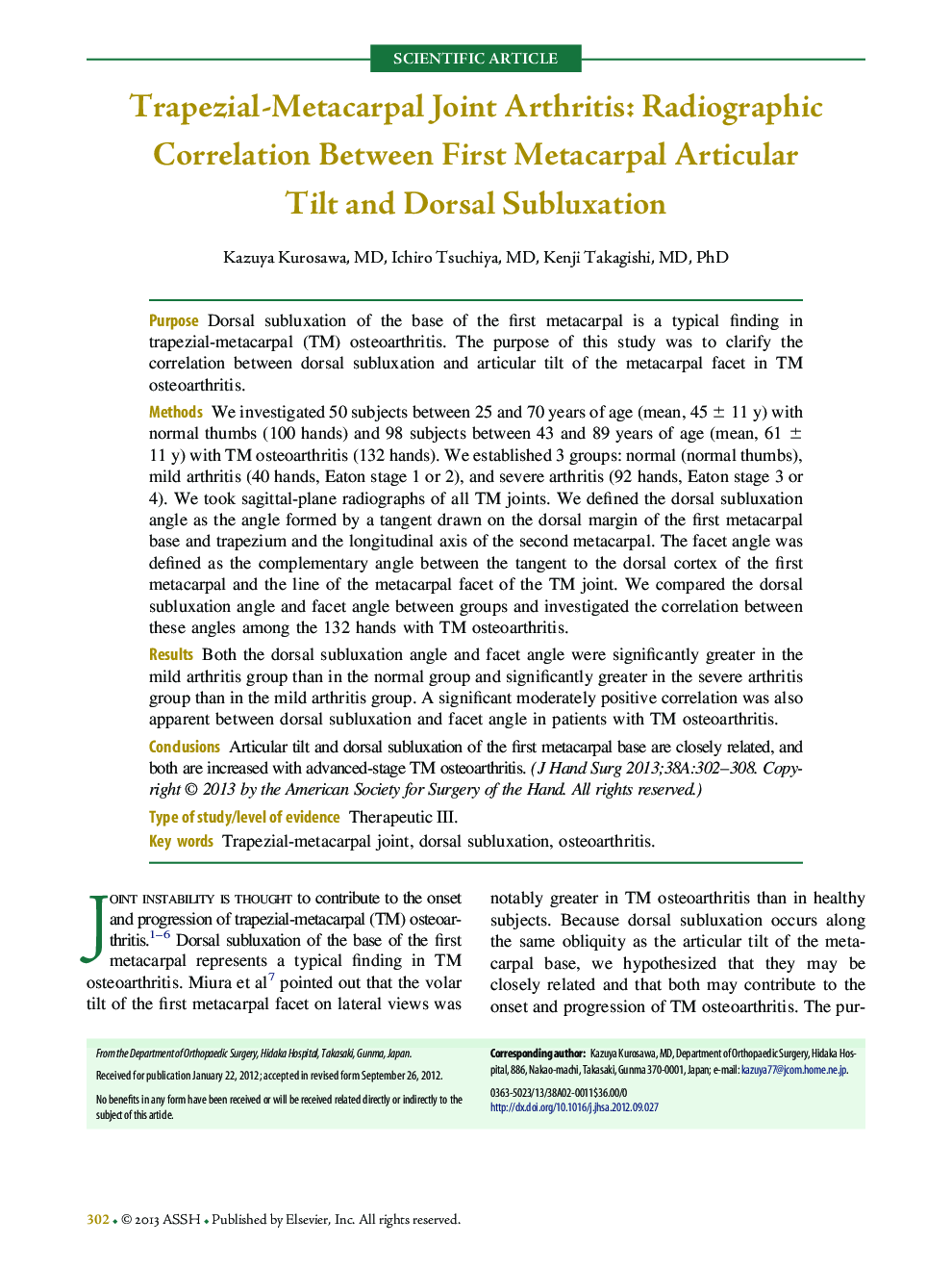| Article ID | Journal | Published Year | Pages | File Type |
|---|---|---|---|---|
| 4068306 | The Journal of Hand Surgery | 2013 | 7 Pages |
PurposeDorsal subluxation of the base of the first metacarpal is a typical finding in trapezial-metacarpal (TM) osteoarthritis. The purpose of this study was to clarify the correlation between dorsal subluxation and articular tilt of the metacarpal facet in TM osteoarthritis.MethodsWe investigated 50 subjects between 25 and 70 years of age (mean, 45 ± 11 y) with normal thumbs (100 hands) and 98 subjects between 43 and 89 years of age (mean, 61 ± 11 y) with TM osteoarthritis (132 hands). We established 3 groups: normal (normal thumbs), mild arthritis (40 hands, Eaton stage 1 or 2), and severe arthritis (92 hands, Eaton stage 3 or 4). We took sagittal-plane radiographs of all TM joints. We defined the dorsal subluxation angle as the angle formed by a tangent drawn on the dorsal margin of the first metacarpal base and trapezium and the longitudinal axis of the second metacarpal. The facet angle was defined as the complementary angle between the tangent to the dorsal cortex of the first metacarpal and the line of the metacarpal facet of the TM joint. We compared the dorsal subluxation angle and facet angle between groups and investigated the correlation between these angles among the 132 hands with TM osteoarthritis.ResultsBoth the dorsal subluxation angle and facet angle were significantly greater in the mild arthritis group than in the normal group and significantly greater in the severe arthritis group than in the mild arthritis group. A significant moderately positive correlation was also apparent between dorsal subluxation and facet angle in patients with TM osteoarthritis.ConclusionsArticular tilt and dorsal subluxation of the first metacarpal base are closely related, and both are increased with advanced-stage TM osteoarthritis.Type of study/level of evidenceTherapeutic III.
